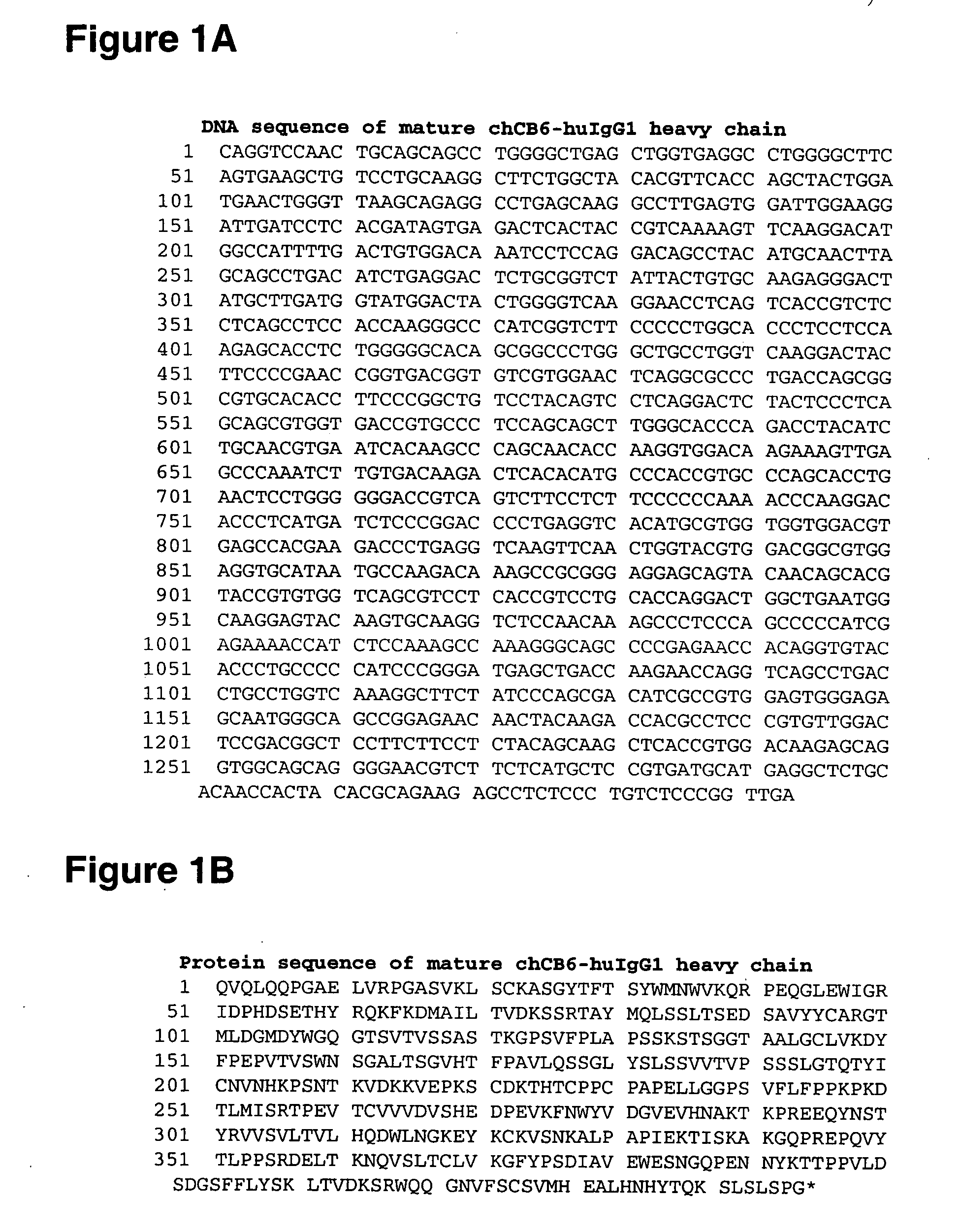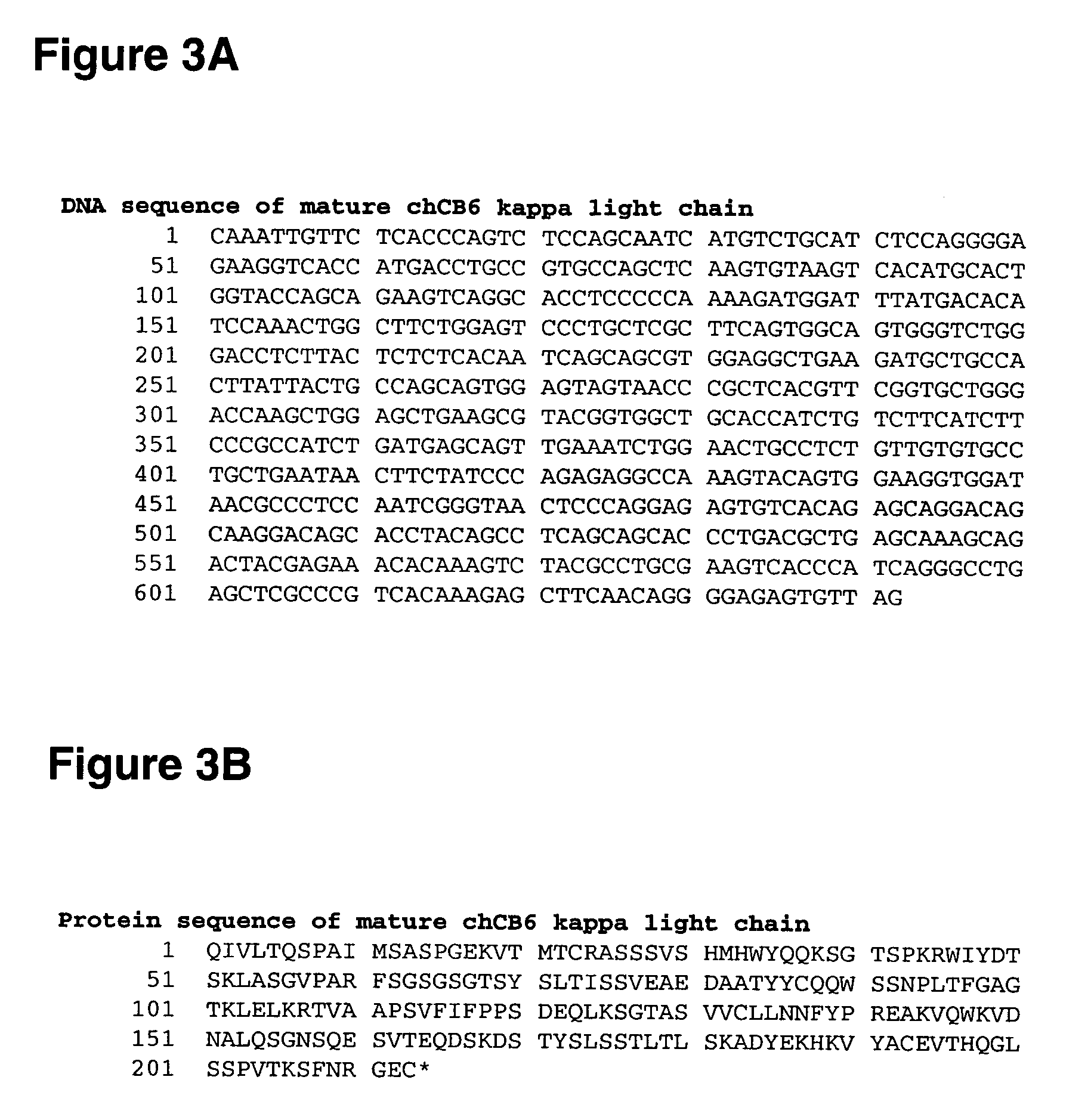Fcgamma receptor-binding polypeptide variants and methods related thereto
a polypeptide and receptor technology, applied in the field of fcgamma receptor-binding polypeptide variants and methods related thereto, can solve the problems of fragments having a reduced half-life, difficult purification, undesirable cell population depletion, etc., to reduce the binding affinity of the altered fc-containing polypeptide for fcr, increase the free energy of binding, and reduce the binding affinity
- Summary
- Abstract
- Description
- Claims
- Application Information
AI Technical Summary
Benefits of technology
Problems solved by technology
Method used
Image
Examples
example 1
Identification of Target Residues that Influence FcγR Binding and Selection of Preferred Amino Acid Substitutions using Electrostatic Optimization
[0548] In an effort to identify the identify the position of target Fc residue(s) that are sub-optimal for FcγR binding, electrostatic charge optimization techniques were applied to a crystal structure of human Fc polypeptide complexed with CD16 (also known as FcγRIII) (see Radaev et al., J. Biol. Chem. 276:16469-16477, 2001; Sondermann et al., Nature 406:267-273, 2000). A crystal structure corresponding to an Fc / CD16b complex (PDB codes 1e4k and Iiis) was prepared using standard procedures for adding hydrogens with the program CHARMM (Accelrys, Inc., San Diego, Calif.). N-acetamide and N-methylamide patches were applied to the N-termini and C-termini, respectively.
[0549] The electrostatic charge optimization procedure utilized a previously described computational analysis (see Lee and Tidor, J. Chem. Phys. 106:8681-8690, 1997; Kangas an...
example 2
Identification of Target Residues that Influence FcγR Binding and election of Preferred Amino Acid Substitutions using Conformation Analysis
[0556] Analysis of the conformational differences between a free Fc molecule and an Fc molecule bound to CD 16b revealed several significant differences. The differences include a widening of the angle between domains CH2 and CH3 when Fc is bound to CD16b. By mutating the Fc protein to generate mutations that favor the CD16-bound conformation, the affinity of Fc for CD 16 was predicted to increase. The identification of altered polypeptides that favor a “bound” conformation were identified using several methods:
[0557] a) 3-D Visualization
[0558] Since the bound form of Fc has a widened angle between the CH2 and CH3 domains, a 3-D molecular visualizer was used to identify mutations that disfavor the unbound conformation by steric crowding. Two suitable amino acid positions were identified: A378 and D376.
[0559] Mutation that substituted A378 fo...
example 4
Construction of Altered Fc Polypeptides
[0567] Alterations predicted by the methods of the invention were introduced into a starting polypeptide encoding the heavy chain of the murine / human chimeric IgG1 monoclonal antibody chCB6-huIgG1. FIGS. 1A and 1B display the nucleotide (SEQ ID NO. 3) and amino acid sequence (SEQ ID NO. 4) of this heavy chain respectively. The variable domain of the antibody is residues 1-120, the human IgG1 constant domain is residues 121-449. FIG. 2 displays the amino acid sequence of the Fc region of chCB6-huIgG1 in EU numbering.
[0568] CB6 is a human CD2-specific murine monoclonal antibody (IgG1, kappa) and was raised using standard techniques. Briefly, mice were immunized with CHO transfectants expressing full-length human CD2. Hybridoma supernatants were screened for binding to CD2-positive Jurkat cells. The variable domains of the CB6 heavy and light chain cDNAs were cloned by RT-PCR from total hybridoma RNA using standard molecular biological technique...
PUM
| Property | Measurement | Unit |
|---|---|---|
| Fraction | aaaaa | aaaaa |
| Fraction | aaaaa | aaaaa |
| Fraction | aaaaa | aaaaa |
Abstract
Description
Claims
Application Information
 Login to View More
Login to View More - R&D
- Intellectual Property
- Life Sciences
- Materials
- Tech Scout
- Unparalleled Data Quality
- Higher Quality Content
- 60% Fewer Hallucinations
Browse by: Latest US Patents, China's latest patents, Technical Efficacy Thesaurus, Application Domain, Technology Topic, Popular Technical Reports.
© 2025 PatSnap. All rights reserved.Legal|Privacy policy|Modern Slavery Act Transparency Statement|Sitemap|About US| Contact US: help@patsnap.com



